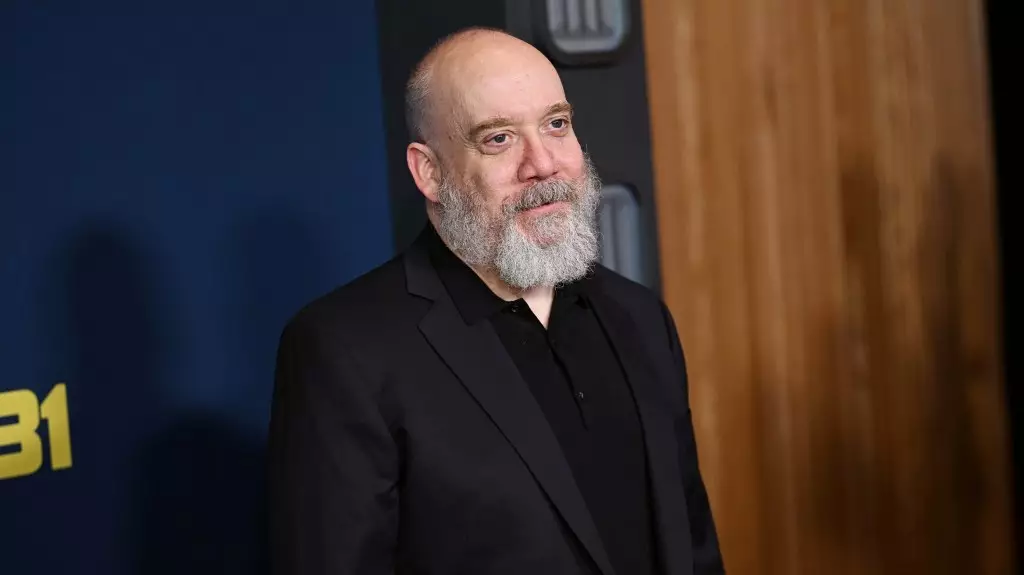The world of entertainment operates on a fragile balance of nostalgia and innovation, and there are few franchises that encapsulate this dynamic as seamlessly as “Downton Abbey.” The recent remarks made by Paul Giamatti, who reprises his role of Harold Levinson in the film “Downton Abbey: The Grand Finale,” offer a poignant glimpse into both the heart and the heritage of the series, particularly following the death of the extraordinary Dame Maggie Smith. Giamatti’s reflections highlight not just the loss of a revered talent but also underline the profound emotional weight carried by those left behind. Celebrating the late Smith’s legacy while simultaneously grappling with the void her absence leaves is a dual challenge that can make a production feel almost sacred.
Giamatti’s insights articulate a multifaceted grief; while the characters on screen are mourning the death of the matriarch, the actors, too, are processing a very real loss that resonates with their performers’ spirits. When Giamatti states, “Not having her there is obviously a huge loss,” it echoes a sentiment that extends beyond the film’s narrative. It encapsulates the emotional strings tied to the cast’s shared experiences, amplifying the weight of Smith’s legacy. This type of layered storytelling becomes both a tribute and a burden; it necessitates that the actors channel their sorrow into their performances, bringing authenticity to their portrayal of loss and reverence.
Revisiting the Legacy
The casting decision to bring Giamatti back into the fold, despite his character’s seemingly minor role in the original series, was a surprising choice for many. However, as mentioned, his character’s arc has grown to carry significant weight. This kind of narrative evolution—in which a character once deemed ancillary evolves into a crucial plot point—reveals a thoughtful approach to storytelling that respects the past while simultaneously progressing into new emotional territories. This strategy aligns well with modern cinematic practices, where the past often interweaves with current narratives to enrich the viewing experience.
The apprehension expressed by Giamatti about his role speaks to a broader theme across the industry: Star power is not an indicator of story importance. This acknowledgment lays bare the reality that even the most limited appearances can yield powerful storytelling. It effectively underscores the potential for every character—and every actor—to play a vital part in the larger mosaic of storytelling, no matter how humble their initial involvement.
Collective Mourning and Creative Expression
The dynamic between personal grief and creative expression is particularly resonant in light of recent events. Executive producer Gareth Neame has already articulated the deep significance of creating a narrative tribute to Smith, whose character, Violet Crawley, became a cultural touchstone. The acknowledgment that Smith’s absence might lend an added poignancy to the unfolding story draws attention to the nature of grief itself—an often messy emotional state that cannot be neatly confined to the realms of private or public.
Neame’s insistence that the film’s narrative will reflect both the loss of a character and that of a beloved actress suggests a conscious effort to weave authenticity into the fabric of the production. This endeavor presents an opportunity for viewers to engage with their own feelings of loss, both for fictional and real-life figures. The decision to embrace this intersection of loss within the project elevates it from mere entertainment to a shared communal experience.
The Art of Continuation
“Downton Abbey: The Grand Finale” is not merely a film designed to close the curtain on a beloved series; rather, it’s an ode to the beauty of storytelling against the backdrop of human vulnerability. The anticipation surrounding this final chapter is laden with the weight of both expectation and remembrance. As fans gather to witness this cinematic farewell, they will do so with not just fond memories of the past but with a collective sense of mourning for what has been irrevocably lost. The film promises to serve as a bittersweet reminder of how art can endure through legacy, and how stories, however painful or joyous, have the power to connect us all.

Leave a Reply